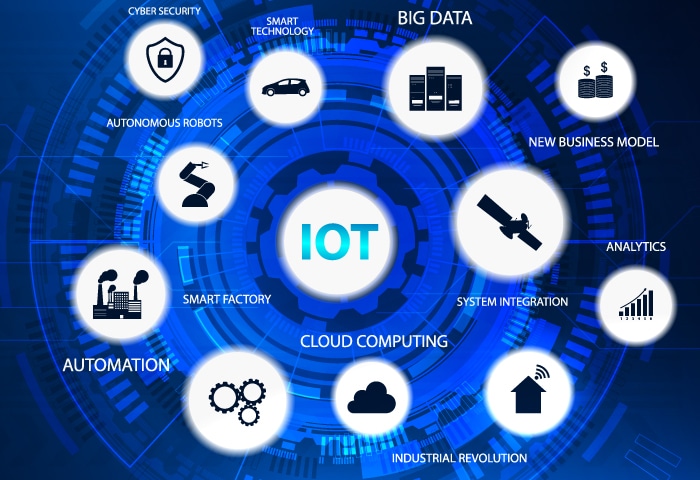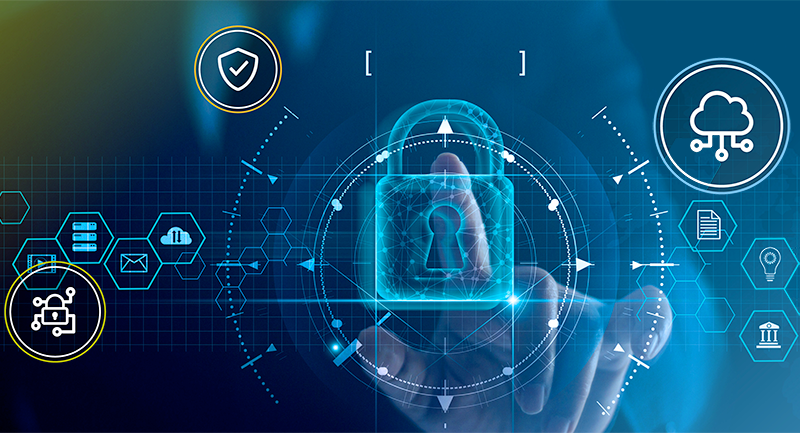The Evolution of IoT Security Architectures: Trends and Innovations
In the ever-expanding realm of the Internet of Things (IoT), where devices are interconnected to enhance efficiency and convenience, the importance of robust security architectures cannot be overstated. As IoT ecosystems continue to grow and evolve, so do the challenges and threats associated with securing these interconnected devices. This blog explores the dynamic landscape of IoT security architectures, delving into the trends and innovations that have emerged to counter the evolving threat landscape. Through a comprehensive examination, we aim to shed light on the critical role played by IoT security architectures in ensuring the integrity, confidentiality, and availability of data in today’s hyper-connected world.
Table of Contents
The Rise of IoT and Security Imperatives
The increase in IoT devices has transformed the way we live, work, and interact with the world around us. From smart homes and industrial automation to healthcare and transportation, IoT has permeated various aspects of our daily lives. However, this widespread adoption has also given rise to security concerns, as the interconnected nature of devices creates weaknesses that can be exploited by harmful entities.

Expanding Attack Surfaces
The interconnected nature of IoT devices exponentially increases the attack surface, providing hackers with a multitude of entry points to exploit. Traditional security models are often insufficient to protect against the diverse range of threats that IoT ecosystems face, necessitating the evolution of security architectures.
Challenges in Traditional Security Models
Traditional security models designed for standalone systems struggle to adapt to the unique challenges presented by IoT. The separate, different nature of IoT environments requires a paradigm shift in security strategies to address the complexities of securing interconnected devices.
Trends Shaping IoT Security Architectures
As the IoT landscape evolves, several trends have emerged to address the security challenges associated with interconnected devices. Understanding these trends is crucial for developing an effective security architecture of IoT that can withstand the ever-changing threat landscape.

Edge Computing and Security
The integration of edge computing in IoT architectures has gained prominence as a means to process data closer to the source, reducing latency and enhancing efficiency. From a security perspective, edge computing introduces the concept of distributed security, where protective measures are deployed at the edge to secure devices and data in real-time.
Blockchain for Enhanced Security
Blockchain technology, known for its decentralized and tamper-resistant nature, is making inroads into IoT security architectures. By leveraging blockchain, IoT ecosystems can ensure the integrity and immutability of data, making it challenging for harmful entities to manipulate information within the network.
AI and Machine Learning in Threat Detection
The integration of artificial intelligence (AI) and machine learning (ML) algorithms has become pivotal in enhancing threat detection capabilities within IoT security architectures. These technologies enable systems to analyze huge amounts of data, identify anomalous patterns, and respond proactively to potential security threats.
Zero Trust Security Models
The traditional perimeter-based security model is being replaced by a Zero Trust approach, which assumes that no device or user within or outside the network can be trusted implicitly. This model enforces rigorous authentication and authorization measures, minimizing the potential impact of security breaches.
Innovations in IoT Security Architectures
In response to the evolving threat landscape, innovative solutions are continuously being developed to fortify IoT security architectures. These advancements aim to address specific challenges associated with securing interconnected devices and data.

Device Identity Management
Device identity management is emerging as a critical component of IoT security architectures. Assigning unique identities to each device and implementing robust authentication mechanisms helps prevent unauthorized access and ensures that only trusted devices can communicate within the network.
Secure Boot and Firmware Updates
Ensuring the integrity of device firmware is essential for preventing unauthorized modifications that could compromise security. Secure boot mechanisms, coupled with secure over-the-air (OTA) firmware updates, enable devices to verify the authenticity of firmware, reducing the risk of dangerous tampering.
Containerization for Isolation
Containerization technologies, such as Docker and Kubernetes, are being employed to enhance the isolation of applications and services within IoT environments. This isolation minimizes the potential impact of a security breach on the entire system, confining the damage to the compromised container.
Collaborative Security Platforms
The collaborative approach to security involves sharing threat intelligence and security insights across the IoT ecosystem. Collaborative security platforms enable devices and systems to collectively respond to emerging threats in real time, creating a united front against dangerous activities.
Challenges in Implementing IoT Security Architectures

While advancements in IoT security architectures are promising, several challenges hinder their seamless implementation. Addressing these challenges is crucial to ensuring the efficacy of security measures in the complex and dynamic landscape of IoT.
Interoperability Concerns
The Variation of IoT devices and platforms positions connectivity challenges. Ensuring that diverse devices can seamlessly communicate and follow common security standards remains a significant hurdle in implementing comprehensive IoT security architectures.
Resource Constraints in IoT Devices
Many IoT devices operate with limited computational power and memory, making it challenging to implement robust security measures. Striking a balance between effective security and resource constraints is essential to avoid compromising the performance of IoT devices.
Privacy and Data Protection
As IoT devices collect and transmit large amounts of data, concerns about user privacy and data protection have become paramount. Implementing security measures that safeguard sensitive information while allowing for Authentic use cases is an easy balancing act.
Technological Innovations Shaping the Future
Several technological innovations are set to play a pivotal role in shaping the future of IoT security architecture. These advancements aim to address the existing weaknesses and provide a more powerful foundation for the expanding IoT ecosystem:

Hardware-based Security: The integration of hardware-based security features in IoT devices, such as Trusted Platform Modules (TPMs) and Secure Elements, adds an extra layer of protection. These components enhance device integrity, safeguard cryptographic keys, and provide a secure enclosure for critical operations.
5G Networks: The advent of 5G networks brings increased bandwidth, lower latency, and improved network slicing capabilities. This not only enhances the performance of IoT devices but also introduces new opportunities for implementing secure and isolated network segments, reducing the attack surface.
Differential Privacy: To address the privacy concerns associated with huge amounts of IoT-generated data, differential privacy techniques are gaining prominence. This approach allows organizations to extract valuable insights from data while preserving the privacy of individual users.
Post-Quantum Cryptography: As quantum computing progresses, traditional encryption algorithms may become responsible for attacks. Post-quantum security aims to develop algorithms that can resist quantum threats, ensuring the long-term security of IoT communications.
Conclusion
As the IoT landscape continues to evolve, the trajectory of IoT security architectures is poised for further innovation and refinement. The integration of emerging technologies, collaborative efforts, and adaptive security models will play a pivotal role in fortifying IoT ecosystems against evolving threats.
In conclusion, the evolution of IoT security architectures is a dynamic process driven by the imperative to secure interconnected devices in an increasingly interconnected world. The trends and innovations discussed underscore the multifaceted nature of IoT security, requiring a holistic approach that encompasses technological advancements, collaborative efforts, and ongoing vigilance to stay ahead of emerging threats. By staying abreast of these developments and actively addressing challenges, stakeholders can contribute to the creation of resilient and secure IoT environments that foster innovation while safeguarding the integrity of data and privacy.

